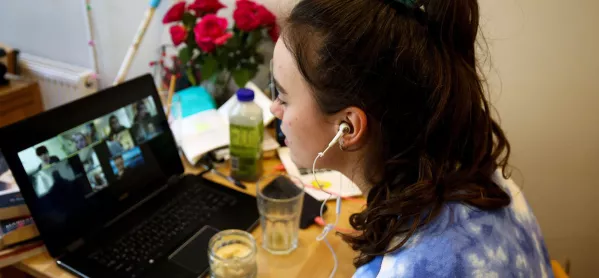Remote learning will continue to be the “predominant” form of education for Year 10 and 12 students returning to school from 15 June, the Department for Education has stated.
Government guidance for secondary schools, published yesterday evening, sets out how secondary students facing exams next year will receive some face-to-face support from their teachers this term, subject to the government’s five tests being met.
As previously announced, the government wants Year 10 and 12 students to return to school from 15 June, but says only around a quarter should attend at any one time.
The latest document provides new guidelines on what this phased return should look like.
Coronavirus: Secondary school students to be kept 2m apart, says DfE
Read: Teacher safety debate needed, says Chris Whitty
Opposition: ‘Step back’ from 1 June school openings, ministers told
The guidance states that schools should: “Provide some face-to-face support to supplement the remote education of Year 10 and Year 12 pupils, with a clear expectation that remote education will continue to be the predominant form of education delivery for these year groups and that this should be of high quality”.
Coronavirus: Guidance for reopening secondary schools
Schools should also “continue to use best endeavours to support all other pupils remaining at home, making use of the available remote education support and ensuring a high-quality offer”, the guidance says.
Secondaries should continue providing full-time provision for vulnerable pupils and the children of critical workers in all year groups, including Year 10 and Year 12, the guidance adds.
Year 10 and 12 students who are in the above groups should be included in the quarter of pupils allowed on school premises at any one time, but not those from other year groups.
Although primary schools have controversially been told not to bring back pupils on a rota system, secondaries “may plan to use rotas”.
But they should avoid “split day rotas within the same day” and ensure that only a quarter of children are ever in the school on any one day, meaning “morning and afternoon rotas should not be applied”, the DfE says.
Schools should also try to ensure that students remain two metres apart from one another.
The guidance continues: “Schools should ensure wider adherence to the approaches set out in the implementing protective measures guidance, to minimise transmission risks.
“If rotas are used, vulnerable children and children of critical workers in all year groups should still be encouraged to attend full time and appropriate risk assessments should consider how this could be managed.”
Explaining why the approach is different from that taken with primary schools, the guidance says: “We are asking primary schools not to plan on the basis of rotas at this stage as they do not provide the consistency of education and care required for the youngest children, who also require more support with remote education.”




